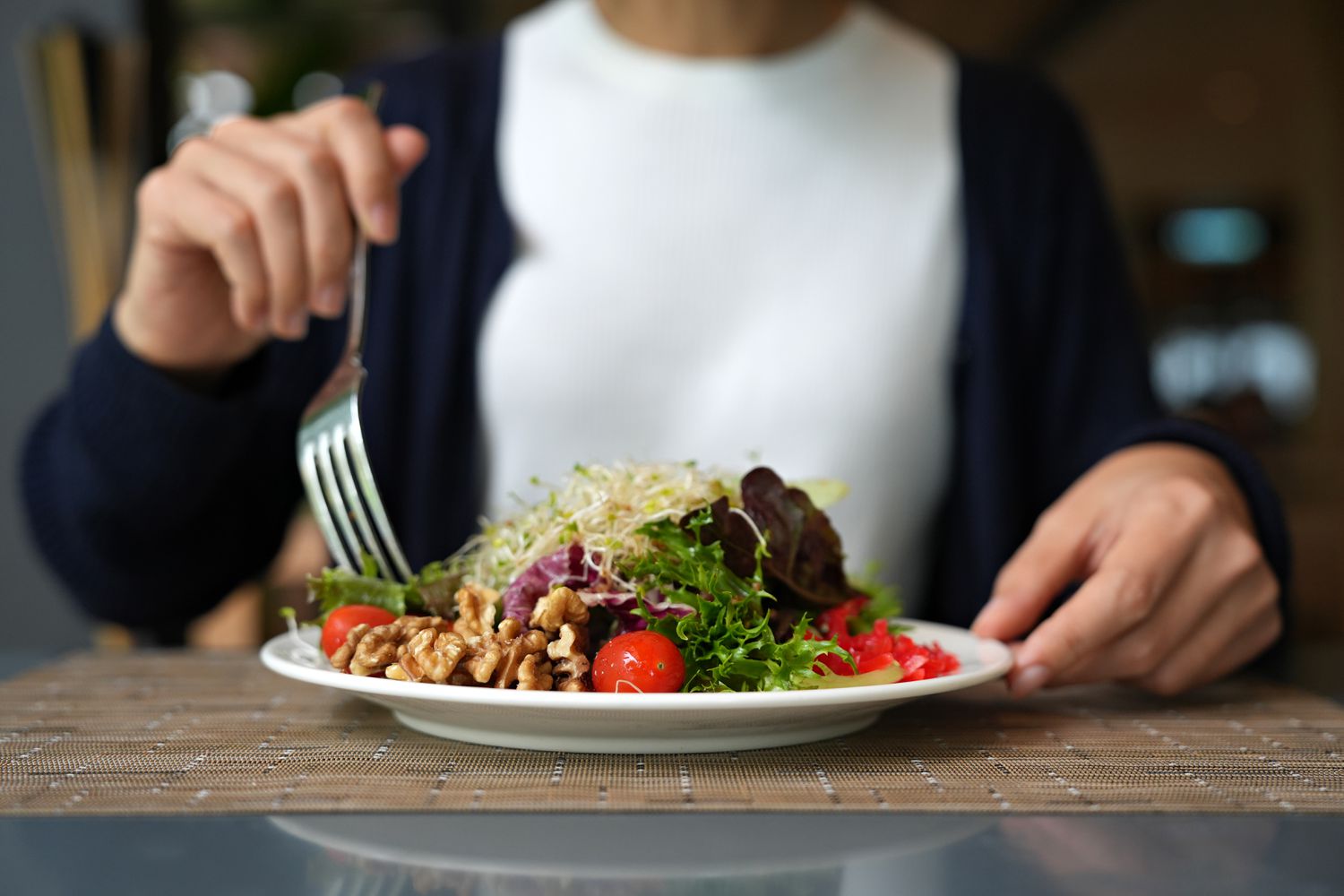What Are 'Anti-Nutrients'? Why Some Influencers are Avoiding Vegetables and What Experts Say

Most people consider vegetables and fruits to be healthy food choices—however, certain compounds within the plants have some TikTokers swearing off vegetables altogether.
Online, some wellness creators are sounding the alarm on “anti-nutrients,” or plant compounds that block the body from absorbing the healthy nutrients that vegetables are known for. They claim anti-nutrients are vegetables’ natural defense system, and we pay the price when we eat them.
“Why would you eat plant leaves and stems and roots and seeds? These are the most highly defended parts of plants,” creator Paul Saladino said in a 2022 TikTok video. “They put defense chemicals in those parts of plants...These are going to mess up your digestion and your hormones, generally make you feel horrible, and they’re going to make you fart a lot, too.”
“Plants don’t have those claws and teeth to fight back, so they have to have inner chemicals, basically, that our body can’t break down,” said TikToker Tiffany Toombs in a June 2024 video.
The online conversation around anti-nutrients—and subsequently avoiding vegetables—has grown in popularity in recent years, primarily among followers of the carnivore diet.
There’s some truth behind the TikTokers’ claims—anti-nutrients really are found in vegetables (and some fruits, too). But are the consequences of eating them as dire as they’re made out to be?
Here’s what experts had to say about anti-nutrients, where they’re found, and whether you should consider cutting foods with anti-nutrients out of your diet.
Anti-nutrients are naturally occurring compounds found in plants, which serve as plants’ protection against pests and pathogens. Certain anti-nutrients also support the plant’s growth and metabolism.
But with this protection comes some less-than-ideal consequences for those who eat them.
“These plant-based compounds can interfere with the absorption of essential nutrients in the body,” Lauren Manaker, RDN, LD, a registered dietitian and writer based in Charleston, South Carolina, told Health.
These are some of the most common anti-nutrients that show up in plant-based foods:
These anti-nutrients can make it harder for the body to get the minerals it needs and can otherwise cause stomach discomfort. But are they entirely bad or unhealthy? It’s not that simple.
Research has shown that phytic acid exhibits antioxidant benefits, as do tannins. Lectins have been linked to antimicrobial and anticancer activity in the body, and saponins appear to have antifungal and anti-inflammatory properties. Protease inhibitors are commonly employed for human immunodeficiency virus (HIV) treatment.
While anti-nutrients do have some negative consequences—especially when it comes to blocking nutrient absorption—they're likely not as bad as many people online fear.
There are some theories that an anti-nutrient called phytoestrogen, found in legumes, might have an effect on human hormones. But anti-nutrients in general don’t appear to have an effect on hormone balance, as some TikTokers claimed.
Plus, anti-nutrients aren’t the only compounds in fruits and vegetables. They are also “great sources of fiber, phytochemicals, and a wide variety of vitamins and minerals that are necessary for optimal health,” Nussinow explained. “They are nature’s most perfect packages.”
Research has shown that sticking with a healthy plant-based diet—that means limiting snacks, desserts, refined grains, sugary drinks, and animal foods—is associated with a lower risk of heart disease, cancer, and mortality.
“The nutrient density of fruits and vegetables far outweighs the potential downsides associated with anti-nutrients,” said Manaker. “Maintaining a varied and colorful diet will support not only individual health, but encourage healthier eating habits in the long run.”
That being said, limiting the amount of anti-nutrients you’re consuming in your diet isn’t a bad idea, particularly if you’re sensitive to these compounds and experience unpleasant gastrointestinal symptoms when you eat them. The same is true for people who are trying to boost their levels of certain nutrients, such as iron or calcium.
Food pairing is one way around this issue, Manaker said. Plan your eating accordingly and separate—by at least two hours—meals that contain foods rich in anti-nutrients from those containing an opposing nutrient. For example, if you’re having grapes and coffee for breakfast—both high in tannins, which block iron absorption—consider adding spinach, an iron-rich food, to a meal later in the day.
Another workaround is switching up your preparation methods, Manaker added.
According to the expert, soaking, cooking, or fermenting beans and grains can help reduce their levels of anti-nutrients without needing to follow strict dietary restrictions. Additionally, sprouting, also known as germination, can also help decrease the anti-nutrient content in grain products.




